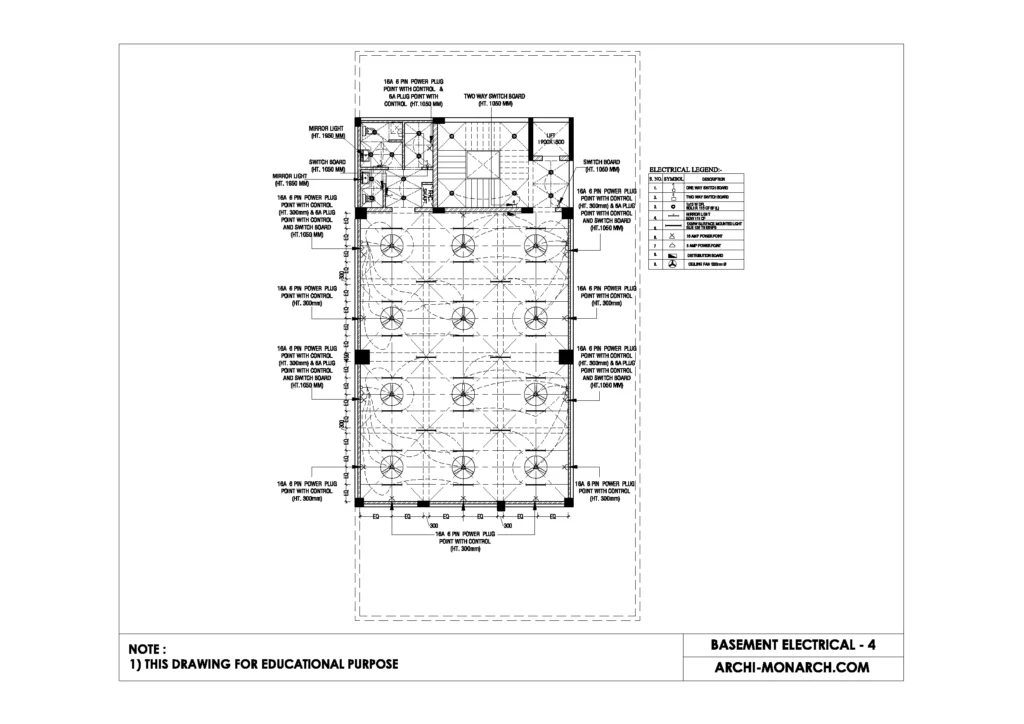The basement of a building is typically located below the ground floor and can be used for various purposes such as storage, mechanical systems, or living space. The electrical system in a basement will typically include many of the same components as the electrical system in the other floors of the building, but there may be some additional considerations or requirements.
One major consideration for basement electrical systems is the potential for moisture and water damage. Basements are often more susceptible to flooding and water infiltration, so the electrical equipment and wiring should be chosen and installed with that in mind. This may include the use of moisture-resistant materials and devices, such as GFCI outlets, and ensuring that all electrical components are properly grounded and bonded to prevent damage from stray voltage.
The basement electrical system could also include additional lighting fixtures, and electrical outlets, to service any mechanical systems, or additional loads that may be present such as HVAC equipment, dehumidifiers, sump pumps, etc.
If the basement is being used as living space, it will have similar electrical needs to the other floors of the building, such as outlets for powering devices and appliances, lighting fixtures, and possibly additional electrical circuits to service specific loads such as home theater systems or home offices.
It’s important to note that if the basement is being finished for living space, it should comply with local building codes, and should be inspected by the appropriate authorities to ensure that it meets safety and electrical codes.
If you want to know about the staircase detail or toilet detail or miscellaneous detail, please click the link.
Image of basement electrical detail and downloadable (in DWG) link below

Basement electrical detail drawing – 4
A detail drawing for the electrical system in a basement would typically include information about the electrical panel and distribution, outlets, light fixtures, and any other electrical equipment or systems that are specific to that basement. The drawing should also include details about the layout and routing of the electrical wiring, including the location of conduit or cable trays, the sizes and types of wire used, and any special requirements for grounding or bonding.
Additionally, the detail drawing would need to show any specialized electrical equipment that may be located in the basement, such as backup generators, sump pumps or dehumidifiers, and the type of connections and wiring that is used to connect them to the electrical system.
Also, the detail drawing should indicate the location of smoke and carbon monoxide detectors, and any other safety features such as emergency lighting or egress lighting that may be required by building codes.
It’s important to note that a detail drawing for a basement electrical system should be done in conjunction with the other architectural, structural and mechanical drawings, to ensure that the electrical system is properly integrated with the overall design and function of the building.
Also, the detail drawing should be done by a professional electrician or an engineer, who is familiar with the local codes and regulations regarding basement electrical systems and the requirements that need to be met for safety, performance and energy efficiency.
Our tips to help you improve your architectural basement electrical detailing.
